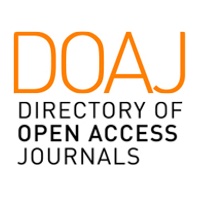The sacred and violence in the digital communication ecosystem
Abstract
The categories of the sacred and violence are at the center of René Girard's thought. Both his theory of the “scapegoat” and his vision of the indissoluble relationship between the sacred and violence serve as conceptual keys to study communication on digital platforms, especially from the perspective of an exuberant diffusion of the visually grotesque and the cloyingly sentimental. in the aesthetics of the digital networks. In this paper we propose the development of a theoretical scheme that allows a neo-mythical and neo-religious reading of communication in the digital ecosystem, as well as reflecting on its applicability in different fields of study from grotesque representations of the human body to the analysis of our emotions with respect to nature and non-human animals.
Downloads
References
Alexander, J. C. (2006). From the depths of despair: performance, counterperformance and ‘September 11’. En Alexander, J. C., Giesen, B. y Mast, J. L. (Eds.), Social Performance. Symbolic Action, Cultural Pragmatics, and Ritual (pp. 91-114). Cambridge University Press.
Bouchard, G. y Taylor, C. (2008). Building the future: A time for reconciliation. Abridged Report. Gouvernement du Québec.
Bugallo, A. I. (2015). Filosofía ambiental y ecosofías. Arne Naess, Spinoza y James. Prometeo Libros.
Canetti, E. (1978 [1960]). Crowds and Power. Continuum.
Citton, Y. (2008). Entre l’économie psychique de Spinoza et l’inter-psychologie économique de Tarde. En Citton, Y. y Lordon, F. (Dirs.), Spinoza et les sciences sociales. De la puissance de la multitude à l’économie des affects (pp. 71-106). Éditions Amsterdam.
Citton, Y. (2017). The ecology of attention. Polity.
Crockett, M. J. (2017). Moral outrage in the digital age. Nature Human Behaviour, 1, 769-771 https://doi.org/10.1038/s41562-017-0213-3.
Deluca, K. M. (2009). Greenpeace International Media Analyst Reflects on Communicating Climate Change. Environmental Communication: A Journal of Nature and Culture, 3(2), 263-269. https://doi.org/10.1080/17524030902972734.
Durham, M. (1996). Preparing for armageddon: Citizen militias, the patriot movement and the Oklahoma city bombing. Terrorism and Political Violence, 8(1), 65-79. https://doi.org/10.1080/09546559608427333.
Eliade, M. (2013 [1957]). Le sacré et le profane. Gallimard.
Fisher, M. (2016). The Weird and The Eerie. Repeater Books.
Forrester, M. (2013). PETA making social noise: A perspective on shock advertising. Portuguese Journal of Social Science, 12(1), 85-100.
Freud, S. (1955 [1930]). El malestar en la cultura. Santiago Rueda.
Gilbert, A., Prévost, M. y Telier, G. (Coord). (2022). Libertés malmenées. Chronique d’une année trouble à l’Université d’Ottawa. Leméac.
Girard, R. (1983). Le Bouc émissaire. Grasset.
Girard, R. (2010 [1972]). La violence et le sacré. Fayard/Pluriel.
Girard, R. (2011). Sacrifice. Michigan State University Press.
Girard, R., Oughourlian, J. M. y Lefort, G. (1978). Des choses cachées depuis la fondation du monde. Grasset.
Goldhaber, M. H. (1997). The Attention Economy and the Net. First Monday, 2(4). https://firstmonday.org/ojs/index.php/fm/article/download/519/440.
Hajer, M. A. (1997). The Politics of Environmental Discourse: Ecological Modernization and the Policy Process. Oxford University Press.
Jensen, D. (2016). The Myth of Human Supremacy. Seven Stories Press.
Kaufmann, E. (2020). Liberal Fundamentalism: A Sociology of Wokeness. American Affairs, IV(4). https://americanaffairsjournal.org/2020/11/liberal-fundamentalism-a-sociology-of-wokeness/.
Labasse, B. (2020). La valeur des informations. Ressorts et contraintes du marché des idées. Les Presses de l'Université d'Ottawa
Lasch, C. (1991 [1979]). The Culture of Narcissism. American Life in an Age of Diminishing Expectations. Norton.
Lévy, P. (1995). Qu’est-ce que le virtuel? Éditions La Découverte.
May, S. (2019). The Power of Cute. Princeton University Press.
McLuhan, M. (1962). The Gutenberg galaxy; the making of typographic man. University of Toronto Press.
Moench, D. B. (19 de octubre de 2020). The WASP Roots of the Social Justice Movement. Tablet. https://www.tabletmag.com/sections/news/articles/wasp-roots-social-justice.
Moles, A. (1977 [1971]). Psychologie du kitsch. L’art du bonheur. Denoël/Gonthier.
Ortega y Gasset, J. (2012 [1929]). La rebelión de las masas. Espasa Libros.
Rieff, P. (1966). The Triumph of the Therapeutic. Uses of Faith After Freud. Harper & Row.
Rose, P. (2010). René Girard as Media Ecologist. En Corey, A. (Ed.), Valuation and Media Ecology: Ethics, Morals, and Laws (pp. 91-123). Hampton Press.
Sacasas, L. M. (27 de septiembre de 2011). Nathaniel Hawthorne Anticipates McLuhan and de Chardin. Technology, Culture, and Ethics. https://thefrailestthing.com/2011/09/27/nathaniel-hawthorne-anticipates-mcluhan-and-de-chardin/.
Tchakhotine, S. (1992). Le viol des foules par la propaganda politique. Gallimard.
Theilard de Chardin, P. (1983 [1963]). El fenómeno humano. Taurus.
Veroni, C. (2014). Spin. How Politics Has the Power to Turn Marketing On Its Head. Anansi.
Vizcaíno-Verdú, A. y Contreras-Pulido, P. (2024). Cross-platform hatedom: influencers’ strategies for managing affective aversión. Cuadernos Info, 60. https://doi.org/10.7764/cdi.60.85872.
Copyright (c) 2025 Isaac Nahón Serfaty

This work is licensed under a Creative Commons Attribution-NonCommercial-ShareAlike 4.0 International License.
The authors retain the copyright and guarantee the journal the right to be the first publication of the work. In case that a translation of the article already published in Austral Comunicación can be published in another journal, it is requested to record the original publication in the translated version.
The license used is CC BY-NC-SA, which allows sharing (copying and redistributing the material in any medium and format) and adapting (remixing, transforming and building on the material) under the following terms: attribution (acknowledge authorship) and non-commercial (the material cannot be used for commercial purposes). Update: February 1, 2022.
Austral Comunicación allows the author (s) to retain the publication rights without restrictions.











































